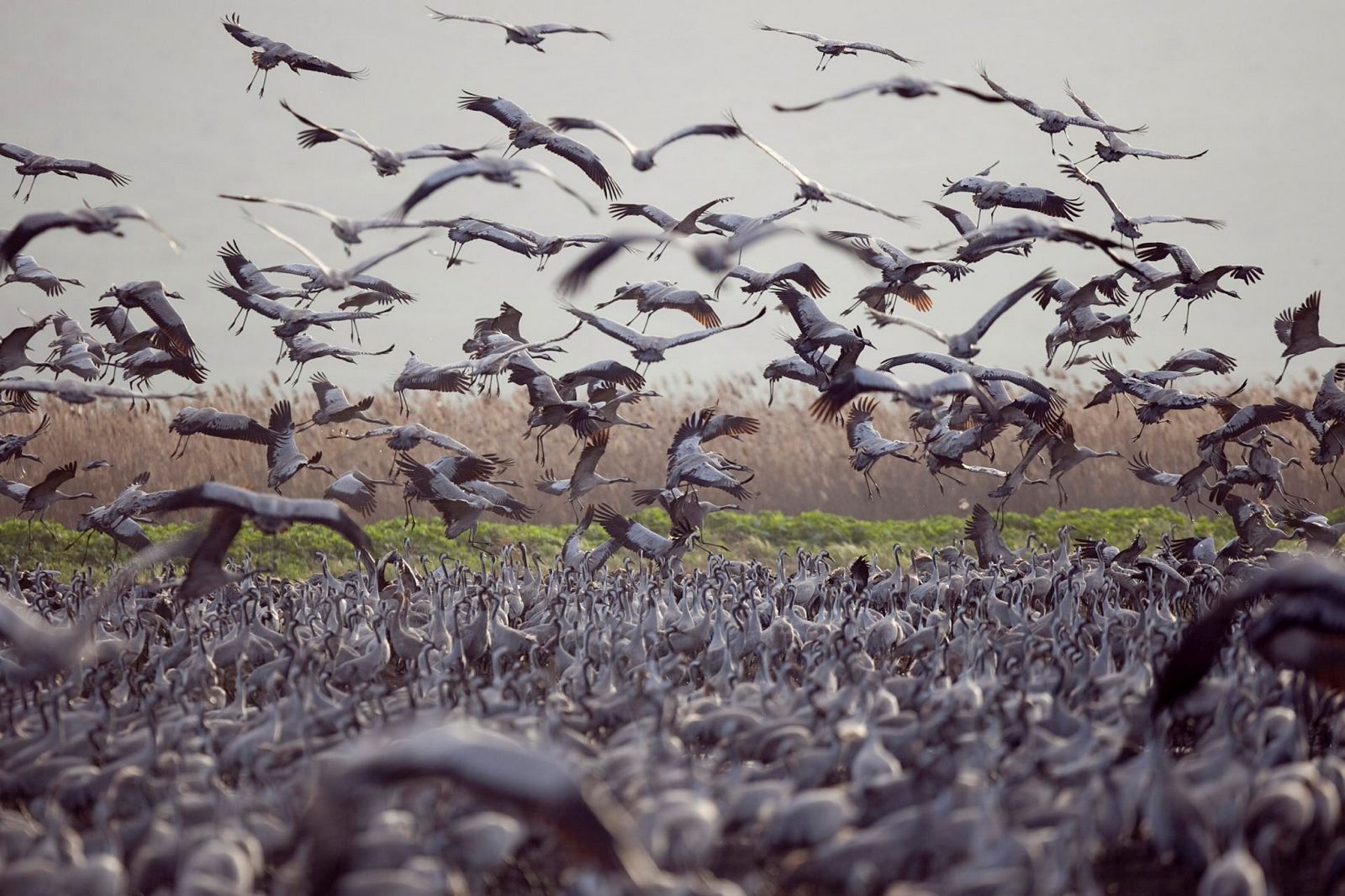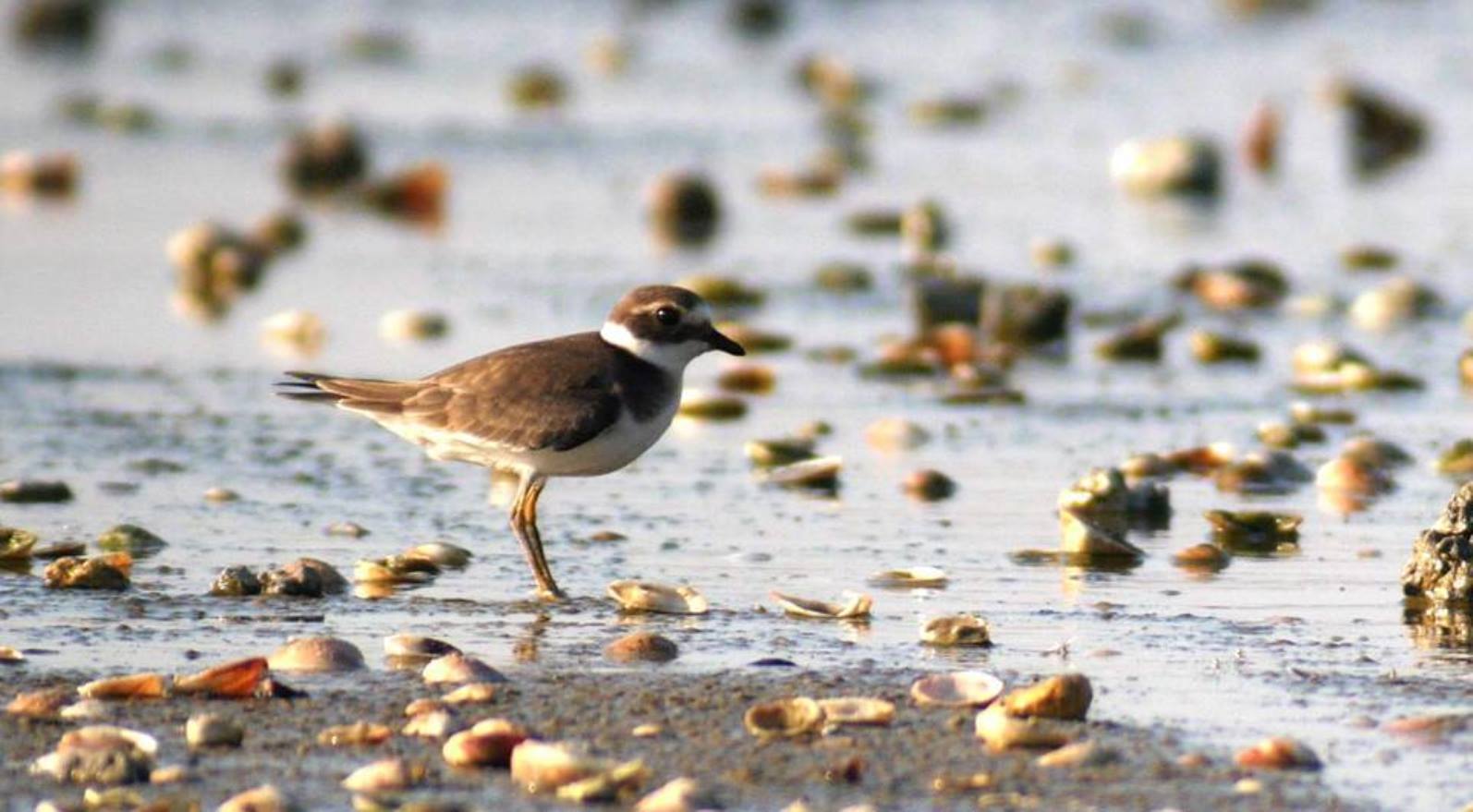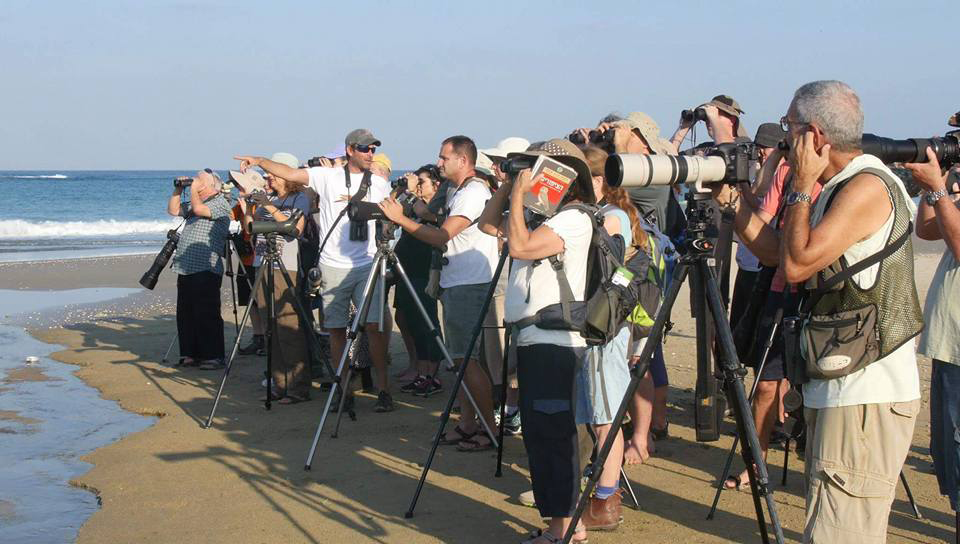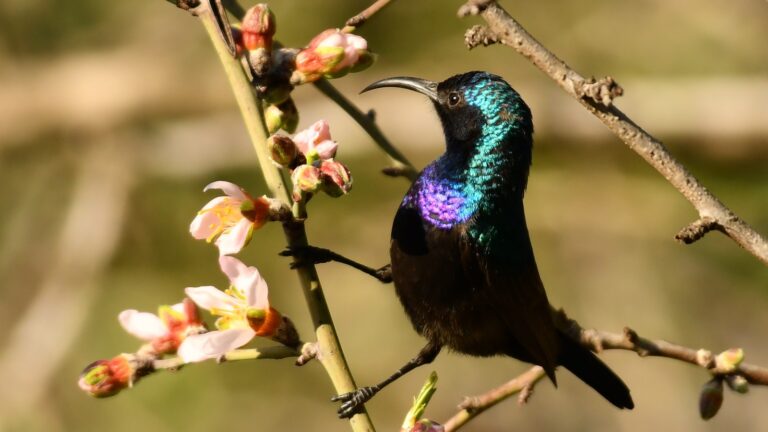Thanks to its unique position at the crossroads of three continents, Israel boasts a soaring birdlife that delights ornithological beginners and experienced birders alike.
“Israel is a meeting of zoo-topical zones, so in this small country you can see a high diversity of species which are represented in Europe, Asia and Africa,” Jonathan Meyrav, tourism director of Israeli Ornithological Center, tells ISRAEL21c.
“Our specialties are some of our desert birds like MacQueen’s bustard, five species of sandgrouse, and the Syrian serin, which is a bird that breeds only in the mountains of Syria, Lebanon and Israel. We also have two very rare night species — the desert tawny owl and the Nubian nightjar. These two have a very small distribution and Israel is the best place in the world to see them.”
The two migration festivals – Hula Valley Birds Festival, which begins on November 20th this year, and Eilat Birds Festival in spring — when some 500 million birds fly over Israel, are the most popular times for birders to visit. During these peak times, birders can catch sight of 150 to 200 species of birds.

Even in the off-season, birdwatchers will spot between 80 and 110 species.
“We run bird tours year round. About 5,000 birders come to Israel every year, and many of them are returning,” says Meyrav, a senior guide specializing in desert birds. “It’s worth coming more than once.”
ISRAEL21c turned to Meyrav and the Israel Birding Portal to create a list of 10 best places in Israel to see feathered friends. For more options, click here to access the Israel Birding Portal’s interactive map showing about 200 birding sites.

Millions of birds fly through the Southern Arava Desert and Eilat is the place to see them. This mecca of birdwatching is home to the Nubian nightjar — one of Israel’s rarest breeding birds – plus white-crowned and hooded wheatears, desert warblers, Spanish sparrows, swallows, wagtails, bee-eaters and waders, among many others.
The list of migrant visitors spotted in Eilat is long and includes, among many others, red-billed tropicbirds, Levant sparrowhawks, rosy starlings, olive tree and Upcher’s warblers, black-headed buntings, broad-billed sandpipers, long-tailed skuas, crab plovers and paddyfield warblers.

The IBRCE focuses on research and monitoring of migrant birds and eco-tourism activities for the public. There’s a handicapped accessible boardwalk. Try to time a visit to coincide with the Eilat International Migration Festival in March.

One of the country’s prime birdwatching spots, the Hula Valley – located between the Golan Heights and the Naftali Ridge – is a must stopover on any bird tour of Israel. The center specializes in ringing demonstrations, birding tours and educational activities.
Twitchers can check off black storks, egrets, cranes, spoonbills, Pallas’s gulls, pied kingfishers, black francolin, Dead Sea sparrow and clamorous reed warblers at this birding center. Try to visit during the International Hula Valley Bird Festival in November, though it’s beautiful all year round. There’s a handicapped accessible boardwalk available.

There’s an eco-experience in the heart of the capital at the Jerusalem Bird Observatory. Located on a one-acre plot (5,000 square meters) between the Israeli parliament building and the Supreme Court, the observatory has a bird-ringing center, conservation and environmental activities, birdwatching tours and a birdwatching club (for kids, too).
JBO Director Alen Kacal was recently listed among “68 extraordinary women in Israel” for teaching more than 40,000 Israeli students from all sectors of society about the environment and ecosystem.
Feathered visitors to the JBO include wrynecks, collared flycatchers, masked and red-backed shrikes, hawfinches, Palestine sunbirds, spectacled bulbuls and Israel’s national bird, the hoopoe.
The Ramat HaNegev Birding Center is located in Sde Boker Field School in the Negev Desert. Ten species of raptors breed in the Zin Valley cliffs as well as three species of owls and two species of ravens. Birdwatchers can see the griffon vulture, Egyptian vultures, golden eagle, long-legged buzzard, Barbary falcon, Lanner falcon and sooty falcon.
In November 2015, birdwatchers were aflutter upon spotting fresh fledglings of blue-cheeked bee-eaters, proving the species not only flies over the Negev but also nests there. The center runs year-round birding tours and many educational and conservational activities.

Mount Hermon is home to the horned lark, which nests on the ground; the long-legged buzzard, Syrian woodpecker, black kite, sombre tit and Syrian serin, among many others.
Although there’s no birding center atop Israel’s tallest peak, a pair of binoculars will afford sightings of many species – some not seen anywhere else in the country. Depending on the season, birders will be able to spot the Radde’s accentor, western rock nuthatch, red-fronted serin, short-toed eagle, crimson-winged finch and white-throated robin, among others.
The Hazeva Field School is synonymous with the Arabian Babbler Research Project, a 45-year study led by professor and zoologist Amotz Zahavi, cofounder of the SPNI (Society for Protection of Nature in Israel). Zahavi and a team of local and visiting researchers have continuously researched the life of the Arabian babbler in the Arava, creating one of the world’s most comprehensive databases on a bird species.
Birding tours led by the Field School let visitors handle and learn all about these babblers. The Nubian nightjar, Arabian warbler, greater hoopoe lark and Pharaoh eagle owl also breed in the area, and common residents include the blackstart, desert lark, rock martin and scrub warbler. The Hazeva Field School is on Road 90, 1.5 hours north of Eilat and 1.5 hours south of Beersheva.

The Jordan Valley hosts its fair share of migrating birds. Self-guided or guided birdwatching tours afford amazing variety. The International Birdwatching Center of the Jordan Valley at Kibbutz Kfar Ruppin, founded in 1996, runs research projects, eco-tourism activities, educational programs for children and farmers, and a ringing station.
Easy to spot are the waterfowl, waders, herons, storks, gulls and terns. Stay awhile, and birders can catch viewings of pygmy cormorant, great black-headed gull, citrine wagtail, velvet scoter, demoiselle crane, Pacific golden plover and Isabelline shrike, to name a few.
- Tishlovit and Kefar Baruch Reservoirs
Birders not afraid of going off the beaten path can add the Tishlovit and Kefar Baruch Reservoirs in the Jezreel Valley to their birding itinerary. Both reservoirs attract wintering waterfowl including white-headed, marbled and ferruginous ducks, black-necked grebe, white pelican and common crane, as well as a range of herons and egrets.
The Israel Science and Technology directory reports these two water sources as a magnet for white-breasted and pied kingfishers, as well as numerous species of eagles and harriers.

The Tel Aviv Rosh Zipor Birdwatching Center is still under construction but is nevertheless hosting people and birds alike in the heart of the city’s Yarkon Park. A bird observatory here will host groups when the center is fully operational in 2017.

Ma’agan Michael, on the coast of the Mediterranean Sea at the foothills of Mount Carmel, is a birding hotspot in Israel. This is the place to come to see the two species of tern — the common tern and the little tern – that breed in Israel. The Ma’agan Michael Field School — an eco-educational center focusing on birding and environmental studies — runs birding tours during migration season. This center will be fully operational in 2017.















